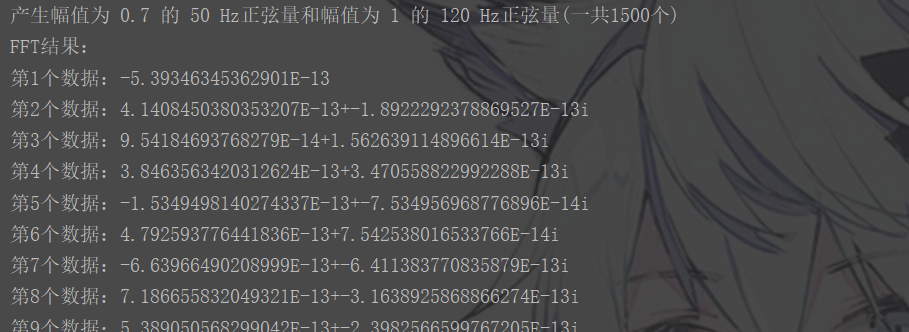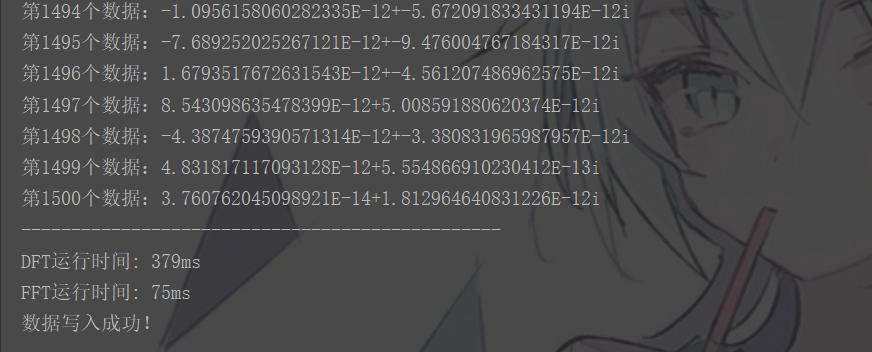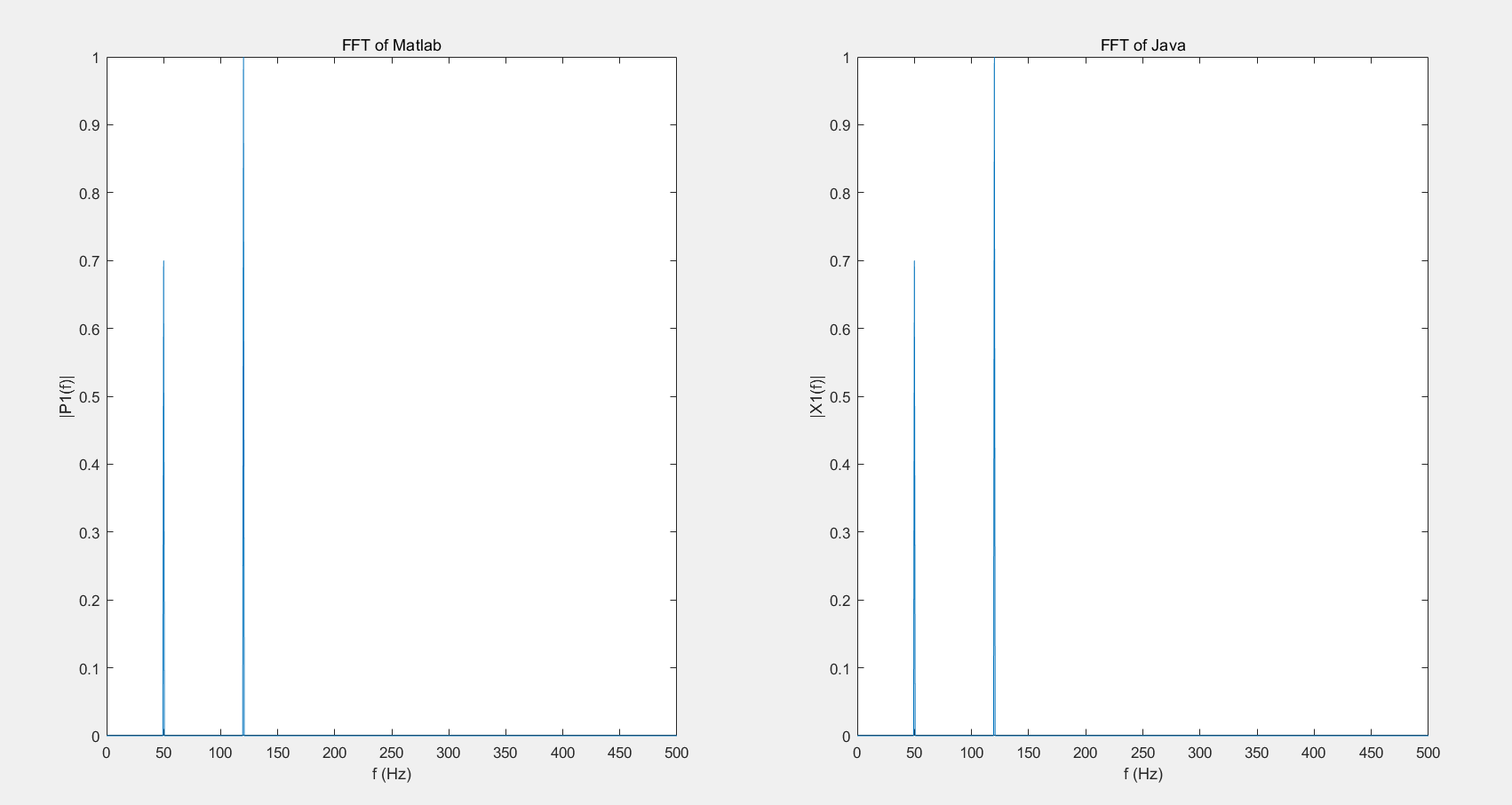java代码
compex类
public class Complex { private double a, b; public Complex(){ this.a = 0.0; this.b = 0.0; } public Complex(double a, double b){ this.a = a; this.b = b; } public Complex(Complex C){ this.a = C.a; this.b = C.b; } public double getRealPart(){ //返回实部 return a; } // 获取实部 public double getImaginaryPart(){ return b; } //获取虚部 public String toString(){ if(b != 0) { if (a == 0) return b + "i"; else return a + "+" + b + "i"; } else return a + ""; } //字符串表示复数 public Complex plus(Complex C){ if (C == null){ System.out.println("对象为null"); return new Complex(); } return new Complex(this.a + C.a, this.b + C.b); } // 加法 public Complex minus(Complex C){ if (C == null){ System.out.println("对象为null"); return new Complex(); } return new Complex(this.a - C.a, this.b - C.b); } // 减法 public Complex multiply(Complex C){ if (C == null){ System.out.println("对象为null"); return new Complex(); } double newa = this.a * C.a - this.b * C.b; double newb = this.a * C.b + this.b * C.a; return new Complex(newa, newb); } // 乘法 public Complex divide(Complex C){ if (C == null){ System.out.println("对象为null"); return new Complex(); } if(C.a == 0 && b == 0){ System.out.println("除数不能为0!"); return new Complex(); } double newa = (this.a * C.a + this.b * C.b) / (C.a * C.a + C.b * C.b); double newb = (this.a * C.a - this.b * C.b) / (C.a * C.a + C.b * C.b); return new Complex(newa, newb); } // 除法 public static void main(String[] args) { Complex x = new Complex(3,4); Complex y = new Complex(5,7); System.out.println("x:" + x.toString()); System.out.println("y:" + y.toString()); System.out.println("(x+y) = " + x.plus(y).toString()); System.out.println("(x-y) = " + x.minus(y).toString()); System.out.println("(x*y) = " + x.multiply(y).toString()); System.out.println("(x/y) = " + x.divide(y).toString()); } }
FFT
import java.io.*; public class FFT { public static void CreateSignal(int length, Complex[] x){ double Fs = 1000; // 采样频率 double T = 1 / Fs; // 采样周期 System.out.println("产生幅值为 0.7 的 50 Hz正弦量和幅值为 1 的 120 Hz正弦量(一共"+length+"个)"); for (int i = 0; i < length; i++) { // 产生幅值为0.7的50Hz正弦量和幅值为1的120 Hz正弦量。 double S = 0.7 * Math.sin(2 * Math.PI * 50 * i * T) + Math.sin(2 * Math.PI * 120 * i * T); x[i] = new Complex(S, 0); } } public static Complex[] dft(Complex[] x) { int n = x.length; if (n == 1) // exp(-2pi*j) = cos(-2pi)+j * sin(-2pi) = 1 return x; Complex[] result = new Complex[n]; for (int i = 0; i < n; i++) { result[i] = new Complex(); for (int k = 0; k < n; k++) { double p = -2 * k * Math.PI * i / n ; // 欧拉公式e^(-j (2pi * k * i) / N) = cos(-2pi * k * i / N) + i*sin(-2pi * k * i/ N) Complex e = new Complex(Math.cos(p), Math.sin(p)); result[i] = result[i].plus(x[k].multiply(e)); } } return result; } public static Complex[] fft(Complex[] x) { int n = x.length; if (n == 1) return x; // 信号数为奇数不满足对称性,使用dft计算 if (n % 2 != 0) return dft(x); // 取下标为偶数的信号 Complex[] even = new Complex[n / 2]; for (int i = 0; i < n / 2; i++) { even[i] = x[2 * i]; } Complex[] evenValue = fft(even); // 取下标为奇数的信号 Complex[] odd = new Complex[n / 2]; for (int i = 0; i < n / 2; i++) { odd[i] = x[2 * i + 1]; } Complex[] oddValue = fft(odd); // 相加 Complex[] result = new Complex[n]; for (int i = 0; i < n / 2; i++) { double p = -2 * Math.PI * i / n ; Complex e = new Complex(Math.cos(p), Math.sin(p)); result[i] = evenValue[i].plus(e.multiply(oddValue[i])); result[i + n / 2] = evenValue[i].minus(e.multiply(oddValue[i])); } return result; } public static void writeText(String filename,Complex[]result) { try { File writeName = new File(filename); // 相对路径,如果没有则要建立一个新文件 writeName.createNewFile(); // 创建新文件,有同名的文件的话直接覆盖 try (FileWriter writer = new FileWriter(writeName); BufferedWriter out = new BufferedWriter(writer) ) { for (int i = 0; i < result.length; i++) { out.write(result[i].toString()+" "); // 即为换行 } } } catch (IOException e) { e.printStackTrace(); } System.out.println("数据写入成功!"); } public static void main(String[] args) { int length = 1500; Complex[] x = new Complex[length]; Complex[] result; CreateSignal(length, x); long start1 = System.currentTimeMillis(); result = dft(x); long end1 = System.currentTimeMillis(); long start2 = System.currentTimeMillis(); result = fft(x); long end2 = System.currentTimeMillis(); System.out.println("FFT结果:"); for (int i = 0; i < length; i++) { System.out.println("第"+(i+1)+"个数据:"+result[i].toString()); } System.out.println("------------------------------------------------"); System.out.println("DFT运行时间: " + (end1 - start1) + "ms"); System.out.println("FFT运行时间: " + (end2 - start2) + "ms"); String filename = "C:\Users\xxx\Desktop\算法课程\xxx\shuju.txt"; writeText(filename, result); } }
结果


验证(matlab)
clc clear close all; Fs = 1000; T = 1/Fs; L = 1500; t = (0:L-1)*T; S = 0.7*sin(2*pi*50*t) + sin(2*pi*120*t); %matlab fft函数 Y = fft(S); %导入java产生的数据 file = fopen('shuju.txt'); p = textscan(file,'%s'); pp =[str2double(p{:})]'; P2 = abs(Y/L); P1 = P2(1:L/2+1); P1(2:end-1) = 2*P1(2:end-1); f = Fs*(0:(L/2))/L; subplot(1,2,1) plot(f,P1) hold on; title('FFT of Matlab') xlabel('f (Hz)') ylabel('|P1(f)|') X2 = abs(pp/L); X1 = X2(1:L/2+1); X1(2:end-1) = 2*X1(2:end-1); f1 = Fs*(0:(L/2))/L; subplot(1,2,2); plot(f1,X1) title('FFT of Java') xlabel('f (Hz)') ylabel('|X1(f)|') hold off;
结果:
